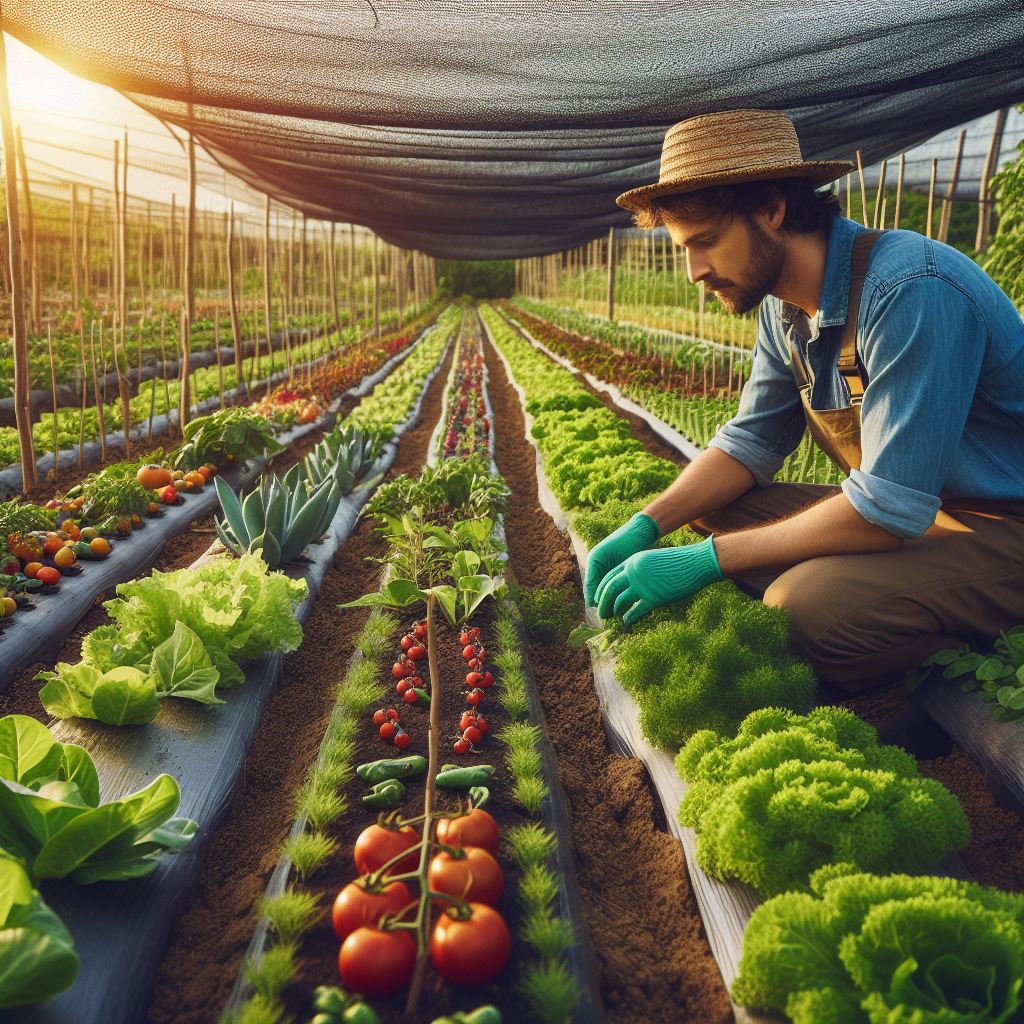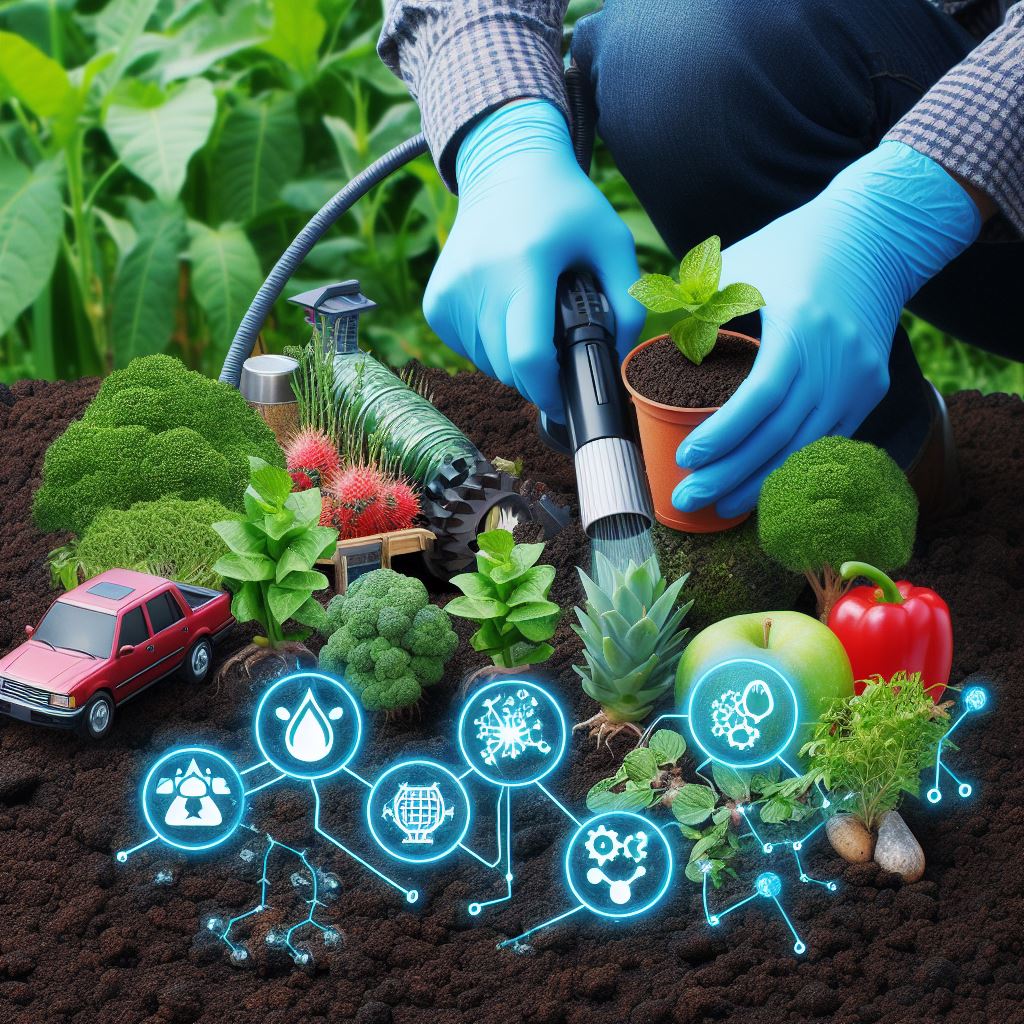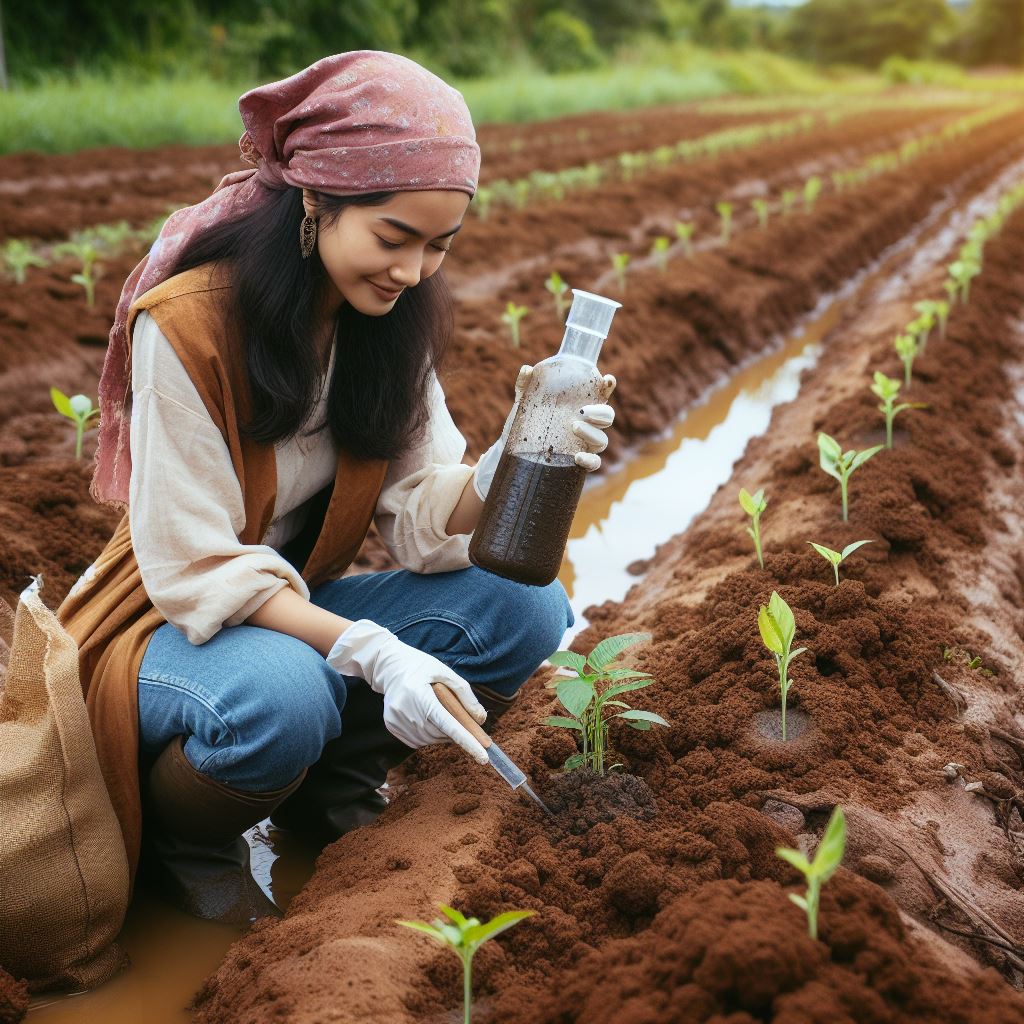Introduction
Crop yield plays a vital role in sustaining agriculture and meeting the growing demand for food.It is pivotal in agriculture as it directly influences food security, economic prosperity, and environmental sustainability.
Adequate yields ensure a stable food supply, supporting growing populations globally. High yields enable farmers to meet market demands, enhancing their income and livelihoods.
Moreover, crop yield impacts rural economies and national GDPs, contributing to overall economic stability. Sustainable yield practices reduce pressure on land and resources, mitigating environmental degradation and preserving ecosystems.
Therefore, optimizing crop yield through innovative technologies and farming practices is essential for ensuring food accessibility, economic growth, and environmental conservation in the face of increasing global challenges.
Integrated Pest Management (IPM) tactics are holistic approaches to minimize pests and maximize crop yield.
Also, it is a holistic approach to managing pests that balances economic considerations, environmental impact, and human health concerns. It utilizes a combination of strategies to minimize pest damage while reducing reliance on chemical pesticides.
Key tactics include biological control, which involves using natural enemies like predators and parasites to regulate pest populations; cultural practices such as crop rotation and habitat manipulation to disrupt pest life cycles; mechanical methods like traps and barriers; and judicious use of pesticides as a last resort.
IPM aims for sustainable, long-term pest control while preserving ecosystem balance and minimizing harm to non-target organisms.
This blog post aims to provide an overview of IPM tactics and their significance in boosting crop yield.
Understanding IPM Tactics
Definition and concept of IPM
Integrated Pest Management (IPM) is a holistic approach to managing pests in agriculture.
It involves the use of various techniques to minimize pest damage while also reducing the use of harmful pesticides.
Components of IPM
Pest identification and monitoring
IPM starts with identifying and monitoring pest populations in the crops.This helps farmers understand the severity of infestation and take appropriate measures.
Cultural and mechanical methods of pest control
IPM encourages the use of cultural practices, such as crop rotation and planting pest-resistant varieties. Mechanical methods, like trapping or handpicking pests, are also effective in controlling their populations.
Biological control measures
IPM relies on natural enemies of pests, such as predators, parasites, and pathogens. These biological control agents help keep pest populations in check without harming the environment or beneficial insects.
Chemical control as a last resort
While chemical pesticides are used in IPM, they are considered a last resort. They are only applied when all other methods fail to control the pest infestation.
Transform Your Agribusiness
Unlock your farm's potential with expert advice tailored to your needs. Get actionable steps that drive real results.
Get StartedBenefits of adopting IPM tactics for boosting crop yield
1. Increased crop productivity
By effectively managing pests, IPM tactics can significantly improve crop yields.
2. Cost-effectiveness
Using IPM methods can reduce the reliance on expensive chemical pesticides, making it more affordable for farmers.
3. Environmental sustainability
IPM promotes the use of eco-friendly pest control measures that minimize harm to the environment.
4. Preservation of beneficial insects
Unlike chemical sprays, IPM methods target pests without harming beneficial insects, like pollinators.
5. Reduced health risks
With less pesticide use, IPM lowers the risk of pesticide exposure for farmers and consumers.
6. Long-term effectiveness
IPM focuses on long-term pest control strategies, preventing the development of resistance in pest populations.
7. Enhancing biodiversity
The use of biological control agents in IPM helps maintain a balanced ecosystem and enhances biodiversity.
In essence, implementing IPM tactics is essential for boosting crop yield sustainably.
By understanding the concept of IPM and its components, farmers can effectively manage pests while minimizing the use of harmful chemical pesticides.
Adopting IPM tactics not only increases crop productivity but also ensures environmental sustainability and reduces health risks.
It is a holistic approach that benefits both farmers and the ecosystems in which they operate.
Pest Identification and Monitoring
Importance of early pest detection
Early detection of pests is crucial in preventing significant crop damage and yield loss. By implementing Integrated Pest Management (IPM) tactics, farmers can identify and monitor pests effectively, enabling them to take timely action to minimize damage.
Importance of early pest detection
Through early pest detection, farmers can prevent population explosions and significant crop loss. Identifying pests in their early stages allows farmers to take proactive measures, reducing the need for extensive pesticide use. IPM focuses on prevention and minimizes the impact of pests on crops.
Techniques for pest identification
Proper pest identification is vital for effective pest management. Farmers can use various techniques for pest identification:
Visual inspection of crops
The visual inspection involves regularly examining crops and looking for signs of pests or crop damage. Farmers can identify pests based on their appearance or evidence of feeding, such as holes in leaves or stunted growth.
Use of pheromone traps
Pheromone traps are useful tools for monitoring and trapping pests. They use synthetic versions of insect hormones to attract and capture specific pests.
By placing these traps strategically within the crop, farmers can identify the presence and population levels of target pests.
Employing monitoring systems and sensors
Advanced monitoring systems and sensors can provide real-time data on pest populations and environmental conditions.
These systems can detect changes in temperature, humidity, or pest activity, alerting farmers to potential pest outbreaks. This data enables farmers to take immediate action to prevent or manage infestations effectively.
Recording and analyzing pest data for effective decision-making
To make effective decisions regarding pest control, farmers must record and analyze pest data. This data includes pest population numbers, crop damage levels, and environmental conditions. By maintaining accurate records, farmers can:
- Evaluate the effectiveness of their pest management strategies
- Identify pest patterns and determine if populations are increasing or decreasing
- Estimate potential crop damage and make informed decisions on pest control methods
- Monitor the long-term impact of pest management practices on crop yield and overall farm health
Analyzing pest data allows farmers to adjust their IPM tactics accordingly, ensuring they are targeting specific pests and using appropriate control methods. It also helps in reducing costs by minimizing unnecessary pesticide use.
In fact, effective pest identification and monitoring are essential components of IPM. By detecting pests early, farmers can prevent significant crop damage and reduce reliance on conventional pesticides.
Utilizing techniques like visual inspection, pheromone traps, and monitoring systems, along with recording and analyzing pest data, enables farmers to make informed decisions, leading to higher crop yields and sustainable agricultural practices.
Read: No-Till Farming: Pros & Cons
Showcase Your Farming Business
Publish your professional farming services profile on our blog for a one-time fee of $200 and reach a dedicated audience of farmers and agribusiness owners.
Publish Your ProfileCultural and Mechanical Methods of Pest Control
Crop rotation and diversification
Crop rotation and diversification are effective cultural methods of pest control. By rotating crops and introducing a variety of plant species, farmers can disrupt pest lifecycles and reduce the risk of infestation.
This practice confuses pests, making it difficult for them to establish and thrive in a monoculture setting.
Soil management practices
1. Tillage methods
Proper tillage techniques can help manage pest populations.
Turning the soil can expose pests to predators, decrease their survival rate, and disrupt their breeding sites. It also helps bury pests deeper, making it harder for them to locate suitable hosts.
2. Mulching and composting
Mulching involves covering the soil with organic material, such as straw or wood chips. This protective layer inhibits weed growth, retains moisture, and regulates soil temperature.
Additionally, it creates a barrier that prevents pests from reaching the crops. Composting, on the other hand, improves soil fertility, promoting healthy plant growth and making them more resilient to pests.
Mechanical techniques
1. Handpicking pests
Handpicking pests is a labor-intensive but efficient method to control infestations. It involves manually removing insects, larvae, or eggs from the plants.
This technique is most effective for larger pests that can be easily spotted and removed, such as caterpillars and slugs.
2. Use of traps and barriers
Traps and barriers are commonly used to catch or deter pests. Sticky traps, for example, are covered in a sticky substance that traps insects when they come into contact with it.
Physical barriers like nets, fences, or screens can also be used to prevent pests from accessing the crops.
3. Physical removal of affected plants
If a plant is severely infested, physically removing it from the field can prevent the pests from spreading to neighboring plants. Prompt removal and proper disposal of infected plants can significantly reduce the risk of infestation and disease transmission.
These cultural and mechanical methods of pest control offer several advantages. They are environmentally friendly, reducing the reliance on chemical pesticides.
Additionally, they can be cost-effective in the long run, as they minimize the damage caused by pests, leading to higher crop yields.
However, it’s essential to note that these methods require careful planning and implementation.
Farmers need to have a good understanding of the pests they are dealing with and the specific requirements of each method. Monitoring and regular inspection of the crops are crucial to identify any emerging pest issues.
In all, cultural and mechanical methods of pest control, such as crop rotation and diversification, soil management practices, and mechanical techniques like handpicking and trapping, can effectively boost crop yield while minimizing the use of chemical pesticides.
These methods promote sustainable agriculture by maintaining a balance between pest control and environmental conservation. By implementing these tactics, farmers can protect their crops and ensure a healthy and productive harvest.
Read: Hop Harvesting for Craft Brewing

Biological Control Measures
In order to boost crop yield and minimize the negative impacts of pests, Integrated Pest Management (IPM) techniques have gained popularity in recent years among farmers and agricultural experts.
IPM emphasizes the use of multiple strategies and approaches to control pests, including biological control measures. Introduction to biological control agents
Biological control measures have several advantages over chemical pesticides. Firstly, they are environmentally friendly as they reduce the use of harmful chemicals.
This helps in maintaining a healthy ecosystem and reducing pollution. Secondly, biological control agents can target specific pests without harming beneficial insects, minimizing the risk of disrupting the natural balance of the ecosystem.
Implementing biological control measures requires a good understanding of the pests and their natural enemies. Farmers and agricultural experts need to identify the specific pests causing damage and study their life cycles.
This information enables them to choose the most appropriate biological control agents and techniques for effective pest management.
Encouraging beneficial organisms in the field
To encourage beneficial organisms in the field, farmers can create suitable habitats by providing shelter, water, and food sources. For example, planting hedgerows or cover crops can provide refuge and attract beneficial insects.
Additionally, reducing pesticide use or utilizing organic pest control methods can preserve the population of beneficial insects, ensuring their continued presence and effectiveness in pest management.
Examples of biocontrol techniques
Examples of biocontrol techniques include augmentative releases, where large numbers of beneficial organisms are released to control pest populations. This method is commonly used for controlling pests like aphids and caterpillars.
Conservation and enhancement of natural enemies involve creating conditions that favor the proliferation of natural predators and parasitoids. These methods often rely on ecological principles to maintain a balance between pests and their natural enemies.
In general, biological control measures play a vital role in boosting crop yield while minimizing the use of harmful pesticides. By harnessing the power of predatory insects, parasitoids, and microorganisms, farmers can reduce pest populations and protect their crops more sustainably.
Promoting the presence of beneficial organisms in the field through suitable habitats and reduced pesticide use further enhances the effectiveness of biocontrol techniques.
With careful implementation and accurate identification of pests and their natural enemies, biological control measures can be a valuable tool in integrated pest management strategies.
Read: Grape Harvesting for Winemaking
Chemical Control as a Last Resort
Limitations and Potential Risks of Chemical Control
Using chemical pesticides to control pests can have certain limitations. Firstly, some pests may develop resistance to chemicals over time, rendering them ineffective.
Second, chemical control may not be suitable for all pests, especially those that are protected in certain life stages or hidden within plant tissues.
Additionally, using chemicals can be costly and require repeated applications.
Furthermore, there are potential risks associated with the use of chemical control methods. Pesticides can harm non-target organisms, such as beneficial insects and wildlife, leading to a disruption of the ecosystem.
There is also a risk of pesticide drift, where chemicals spread beyond the target area and contaminate water sources, soil, and nearby crops. Ingesting or coming into contact with pesticides can pose health risks to humans as well.
Proper and Responsible Use of Pesticides
Following the recommended dosage and application methods
Proper application of pesticides is crucial to minimize risks and maximize effectiveness. It is important to carefully read and follow the product label instructions, including dosage and application rates.
Incorrect application can lead to ineffective pest control or unintended harm to the environment.
Considering potential impacts on non-target organisms and the environment
Prior to using pesticides, it is essential to assess the potential impacts on non-target organisms and the surrounding ecosystem. Selective pesticides should be chosen whenever possible to minimize harm to beneficial insects and other wildlife.
Showcase Your Farming Business
Publish your professional farming services profile on our blog for a one-time fee of $200 and reach a dedicated audience of farmers and agribusiness owners.
Publish Your ProfileTiming of application should also be considered to avoid impacting pollinators and other beneficial insects during their active periods.
Integrating Chemical Control within IPM Framework
Chemical control should be integrated within the broader IPM framework to ensure a holistic approach to pest management. It should not be relied upon as the sole method of control but used in combination with other IPM tactics.
By combining chemical control with preventive measures, cultural practices, and biological control, the overall reliance on chemical pesticides can be reduced.
Generally, chemical control should only be used as a last resort in pest management. Its limitations and potential risks need to be carefully considered, and proper and responsible use of pesticides is crucial.
By integrating chemical control within the IPM framework, we can achieve better crop yields while minimizing the negative impacts on the environment and non-target organisms.
Read: Herb Harvesting: Preserving Flavor & Freshness
Explore Further: Greenhouse Farming in a Changing Climate
See Related Content: Water-Saving Techniques in Modern Agriculture
Conclusion
Recap of the key benefits and components of IPM tactics
Integrated Pest Management (IPM) combines multiple strategies to control pests while minimizing environmental impact and reducing reliance on chemical pesticides.
Key benefits include sustainable pest management, reduced pesticide use, and preservation of beneficial organisms.
Components encompass cultural practices like crop rotation, biological controls such as introducing predators, mechanical methods like traps, and chemical interventions as a last resort.
Monitoring plays a crucial role, allowing for timely interventions. IPM promotes ecosystem health, cost-effectiveness, and long-term pest control efficacy, making it a preferred approach in agriculture, horticulture, and pest management programs globally.
Emphasize the role of IPM in boosting crop yield sustainably
Integrated Pest Management (IPM) plays a pivotal role in enhancing crop yields sustainably by employing a holistic approach to pest and disease management.
By integrating various techniques such as biological controls, crop rotation, and habitat manipulation, IPM minimizes reliance on chemical pesticides, thus reducing environmental impact and preserving beneficial organisms.
Through regular monitoring and early detection, IPM enables timely interventions, preventing pest outbreaks and minimizing crop damage.
Moreover, by promoting biodiversity and enhancing soil health, IPM fosters resilient agroecosystems, leading to increased yields over the long term while mitigating risks associated with pesticide resistance and environmental degradation.
Encouragement farmers to adopt and implement IPM strategies for optimal results
Integrated Pest Management (IPM) strategies offer sustainable solutions for farmers.
Encouraging their adoption enhances agricultural productivity while minimizing environmental impact.
Farmers can implement IPM by employing diverse techniques such as crop rotation, biological controls, and judicious use of pesticides. Education and training programs play a vital role in fostering understanding and application of IPM principles.
By promoting IPM, farmers can reduce reliance on chemical inputs, conserve biodiversity, and mitigate pest resistance.
Governments and agricultural organizations can support this transition through subsidies, technical assistance, and research initiatives, fostering a more resilient and ecologically sound agricultural system.




